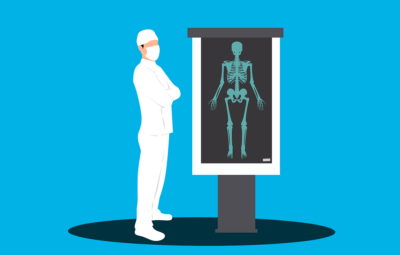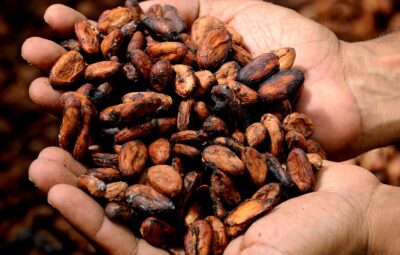The global prevalence of diabetes in 2014 was 8.5%. The risk of developing diabetes in North America is estimated to be 9.6%. Maintaining a healthy lifestyle through proper nutrition and exercise can help reduce this risk, while similar interventions can help manage the disease in those who have it. Do supplements have a place in diabetes treatment or prevention?
Cinnamon is mostly used for cooking, but in some cultures, it is also used as a natural remedy for various illnesses. Some people think that cinnamon can help lower blood sugar levels and insulin resistance in people with diabetes. Other people think that cinnamon might help reduce inflammation, which can lead to diabetes. There is evidence from both laboratory and real-world studies that suggest cinnamon has properties that could help to reduce inflammation, kill harmful bacteria, and make the body more responsive to insulin, which could help to prevent and manage diabetes.
A lot of the research that exists has been conducted using test tubes and animals. While some studies show no effects[6], some suggest that cinnamon intake reduces fasting and post-meal serum glucose[7] and insulin concentrations[8] in people with type 2 diabetes. Some research suggests that cinnamon may reduce fasting and post-meal serum glucose and insulin concentrations in people with type 2 diabetes, while other research suggests it has no effect. A study testing the effect of cinnamon on humans found that it improved blood lipids and glucose in people with diabetes. A 2007 study found no evidence that cinnamon has any effect on outcomes, despite using similar methods to the original study.
The researchers in this study wanted to see if taking cinnamon supplements would have any effect on adults with diabetes. The investigators measured biomarkers of glucose tolerance, insulin sensitivity, antioxidant capacity, and oxidative stress to see if cinnamon had any beneficial effects on glucose management and systemic inflammation.
As the prevalence of diabetes grows worldwide, researchers are interested in using natural foods like cinnamon to help control blood sugar levels and reduce inflammation. There is currently some research that suggests that cinnamon may help to manage diabetes and has anti-inflammatory properties; however, more research is needed on human subjects to confirm these effects. The goal of the study was to test the effects of cinnamon supplementation on adults with diabetes.
Who and what was studied?
This was a double-blind, randomized controlled trial involving 44 adult men and women with type 2 diabetes. The average age of participants was 57, and their average BMI was 28, but none were obese or had kidney disease, chronic inflammatory diseases, or heart disease. No participants had diabetes for more than eight years. The average HbA1c was approximately 10%, and the average fasting glucose was approximately 187 mg/dL (10.4 mmol/L).
Researchers determined that they would need 40 participants to have enough power for their study and enrolled 44 participants to account for any dropouts that might occur. At the end of the study, 39 patients, 20 in the experimental group and 19 in the control group, were still participating. The researchers never reported their predicted effect size for their power calculation, nor did they specify what outcome they used to calculate the power. This is important because, without this information, it is difficult to know how accurate the power calculation is.
The patients who were enrolled were randomly assigned to either the experimental group or the control group. The experimental group received a capsule that contained one gram of ground cinnamon, while the control group received a capsule of the same size, shape, color, and smell, but it was filled with microcrystalline cellulose. Both groups of participants were asked to take one of the capsules after breakfast, lunch, and dinner for eight weeks but do not change their daily eating habits. Compliance was assessed via pill counts every four weeks.
The researchers measured various indicators of blood sugar levels, insulin levels, and oxidative stress before and after an 8-week intervention. They used the FPG and fasting insulin values also to calculate insulin sensitivity using the homeostasis model assessment for insulin resistance.
The study did not mention primary or secondary outcomes. The study had preregistered that carboxymethyl lysine, HbA1c, and fasting insulin would be considered primary outcomes, along with many other outcomes that were not reported in this study. The authors did not adjust for multiple comparisons.
This study included 44 eligible participants who were randomly assigned to either an experimental group or a control group. The experimental group took a one-gram cinnamon capsule three times daily for eight weeks, and the control group did the same with a placebo. The researchers collected several biomarkers at the beginning of the study and then again eight weeks later. These biomarkers included HbA1c, FPG, fasting insulin, total antioxidant capacity, carboxymethyl lysine, and MDA. Biomarker results were then compared within and between groups.
What were the findings?
The study found that there was no difference between the effects of taking cinnamon and taking a placebo over the course of eight weeks. The cinnamon group had a smaller increase in fasting blood sugar than the control group. The between-group difference approached significance (p=0.06). The average difference in MDA was not significant, with the cinnamon group seeing a 0.00 μmol/L change and the placebo group seeing a 1.05 μmol/L increase.
What does this study really tell us?
Although the study found that cinnamon may not have an effect on type 2 diabetes, it did not study the long-term effects of cinnamon. Although the study’s results are somewhat suggestive, they are not conclusive due to the study’s many shortcomings.
Recent studies on the effect of cinnamon supplementation in people with type 2 diabetes have been inconclusive. A 2007 trial conducted with 58 participants who had type 2 diabetes found that taking one gram of cinnamon every day for three months had no significant effect on FPG, HbA1c, or fasting insulin levels. The current study had a similar design to the 2007 study, and included similar participants (many were on metformin in the 2007 group), but tripled the dosage of the cinnamon and shortened the testing period. The study under review did not find a difference in the outcome when a higher dosage was used, although more research is needed to confirm this.
How the Body Controls Blood Sugar
The body regulates blood sugar levels in several ways. The most commonly understood mechanism involves insulin, a hormone secreted by the pancreas that delivers glucose to cells throughout the body. The eating of a meal by an individual causes the pancreas of said individual to release insulin in order to transport glucose into cells. As long as the receptors on the cell walls are sensitive to insulin, the channeling of glucose out of the bloodstream will occur relatively quickly and without excessive insulin production.
Sometimes, however, the cells become resistant to insulin’s effects. The pancreas will produce more and more insulin when this occurs in order to try and push the glucose into the cells. This effort is not very effective and may make blood sugar levels rise, eventually causing type II diabetes. Chromium and lipoic acid may improve insulin sensitivity.
Some people who have non-insulin-dependent diabetes or who are obese may have a problem with their body’s internal mechanism for releasing glucose. This can cause their blood glucose to be too high. This refers to processes that result in elevated blood sugar levels.2Down-regulation is the process of decreasing the level or activity of a gene product. So, the down-regulation of these processes can result in controlling blood sugar levels.2
Cinnamon Promotes Healthy Blood Sugar
Cinnamon has been used for several thousand years in traditional medical systems, such as Ayurvedic and Greco-European. The native home of this evergreen tree is in tropical southern India and Sri Lanka. The bark of the tree is used to manage conditions such as nausea, bloating, flatulence, and anorexia. Cinnamon is a very popular spice that is used to flavor many different types of food, from oatmeal to cappuccino. Cinnamon has been found to promote healthy glucose metabolism in recent research.
Cinnamon was found to have insulin-enhancing complexes that help with diabetes and glucose intolerance.3 These compounds increased insulin-dependent glucose metabolism by 20-fold in vitro.3 Cinnamon also has other nutrients like epicatechin, phenol, and tannin that have antioxidant activity. Evidence suggests that polyphenol polymers may help to lower blood glucose levels by increasing the expression of genes involved in activating the cell membrane’s insulin receptors.
Animal experiments have confirmed the benefits of cinnamon. The study found that when rats were given an oral cinnamon supplement for three weeks, it more than doubled the amount of glucose that was infused into their cells. The extract improved insulin action by enhancing the insulin-signaling pathway in skeletal muscle, which resulted in increased glucose uptake.
Cinnamon can even help control the negative effects of a diet high in fructose, a simple sugar.6 When rats were fed large amounts of fructose for three weeks with or without the addition of cinnamon extract to their drinking water, the cinnamon extract improved the glucose infusion rate in the fructose-fed animals so much that it equaled that of control rats eating a standard chow diet. This study suggests that consuming cinnamon early on could prevent the development of insulin resistance in those who consume a lot of fructose sugar.
Researchers are looking for nutrients that can improve both glucose metabolism and lipid levels because type II diabetics have an increased incidence of cardiovascular disease, which can be up to four times higher than non-diabetics. Cinnamon has dual-action agent properties, according to a recent study published in Diabetes Care. The study consists of 60 adults with type II diabetes, 30 men and 30 women, divided into six groups. Three different groups of people were given either one, three, or six grams of cinnamon or an equivalent number of placebo capsules daily.
After taking either the spice or placebo for 40 days, there was a 20-day period where no treatment was taken. Cinnamon reduces fasting serum glucose levels by 18-29% after an initial 40-day period. The one-gram dose also resulted in a reduction of triglyceride levels by 18%, low-density lipoprotein by 7%, and total cholesterol by 12%. Cinnamon intake was found to produce dose-dependent reductions in triglycerides, LDL, and total cholesterol.
The positive effects continued even after the 20-day washout period. Although glucose and triglyceride levels increased slightly during the period without cinnamon supplementation, they remained lower than the levels before cinnamon supplementation began. The levels of LDL and total cholesterol continued to decline even after the person stopped using cinnamon. According to this study, even if you miss a dose of cinnamon every now and then, you should still continue to experience its benefits. One gram or more of this drug is likely to be helpful in controlling blood glucose and lipid levels, according to the results.7
This suggests that cinnamon is one of the most effective nutrients when it comes to improving glucose metabolism. In a study conducted by USDA researchers at the Beltsville center, it was found that out of 49 herbs, spices, and medicinal plant extracts tested; cinnamon was the most effective in terms of glucose utilization, followed by witch hazel, green and black teas, and allspice. The active chemicals in cinnamon that give it its unique properties are polyphenols. This suggests that cinnamon could be very effective in treating type 2 diabetes, a condition characterized by insulin resistance. This suggests that cinnamon could effectively help treat type 2 diabetes by increasing insulin activity.
A Major Advance in Glucose Management
The increasing number of people in the United States with type II diabetes is neither unexpected nor unstoppable. Because millions of Americans have poor dietary habits and live unhealthy lifestyles, they are more likely to experience negative health consequences.
There are measures you can take to keep your blood sugar level healthy. Supporting optimal insulin action through nutrients such as chromium and lipoic acid can help keep the body’s cells sensitive to insulin signals, aiding in maintaining healthy body weight and regular exercise schedule.







